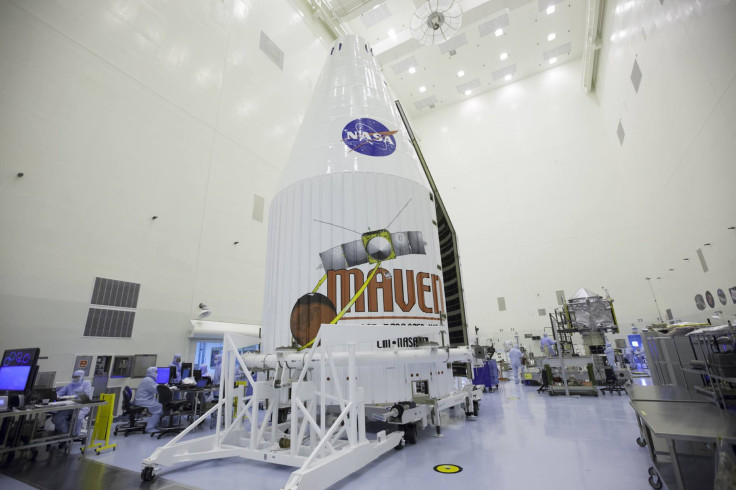NASA’s MAVEN Spacecraft Is A Go: Mars Mission Hopes To Answer Some Red Planet Riddles

NASA’s Mars Atmosphere and Volatile Evolution, MAVEN, spacecraft will launch Monday on its journey to Mars. The MAVEN spacecraft will examine the Red Planet's upper atmosphere and ionosphere as well as the effects of the sun and solar wind. MAVEN hopes to answer some questions about how Mars came to be the desolate world it is today, including the loss of atmosphere, change in climate and the disappearance of water.
Mars and Earth started out quite similar, notes NASA. Around 4 billion years ago, Mars was warm and had flowing water with, NASA believes, a thick atmosphere composed of carbon dioxide and other greenhouse gases. That has all changed and Mars now is a barren planet with a thin atmosphere. The biggest riddle involves the dramatic climate change, and MAVEN will be used to test some theories that attempt to solve the Martian mystery. One theory involves the sun causing, in some way, gas to escape from the planet’s upper atmosphere. Because Mars does not have an electromagnetic field to shield it from solar wind, the sun may have gradually stripped Mars of its atmospheric "blanket."
Previous Mars missions, including orbiters and rovers like Curiosity, have been searching for evidence of water or life while the upper atmosphere has yet to be examined. Bruce Jakosky, MAVEN’s primary researcher, said in a statement, “You can't hope, with a single spacecraft, to study all aspects and to learn everything there is to know about it. With MAVEN, we're exploring the single biggest unexplored piece of Mars so far.”
MAVEN will be equipped with three instrument suites: a Particles and Fields Package, PFP; a Remote Sensing Package; and the Neutral Gas and Ion Mass Spectrometer, NGIMS. According to NASA, the PFP has six instruments to analyze solar wind, the Remote Sensing Package will be used to explore Mars’ upper atmosphere and ionosphere, a region of weakly ionized gas, and the NGIMS will be used to determine the composition and isotopes, elements with the same number of protons but different number of neutrons, of neutral, or inert, gases.
The MAVEN spacecraft has already been hoisted atop the United Launch Alliance Atlas V 401 rocket and NASA expects the spacecraft to reach Mars by Sept. 22, 2014. The final mission review was performed Friday and the spacecraft was cleared for launch. The launch is scheduled for a 1:28 p.m. EST launch with a two-hour window.
Prior to launch, NASA has scheduled a broadcast for viewers to learn more about MAVEN and the new Mars mission as well as a PSA from LeVar Burton. The broadcast begins at 2 p.m EST (11 a.m. PST) and can be viewed below.
Video streaming by Ustream© Copyright IBTimes 2024. All rights reserved.






















